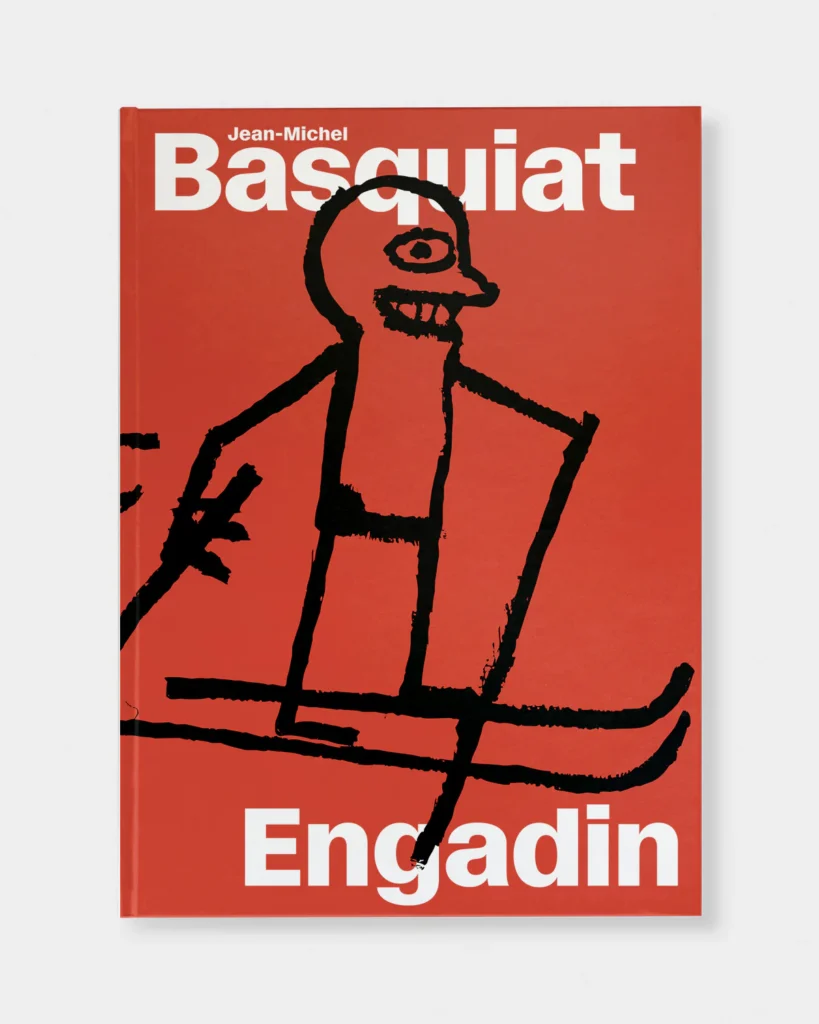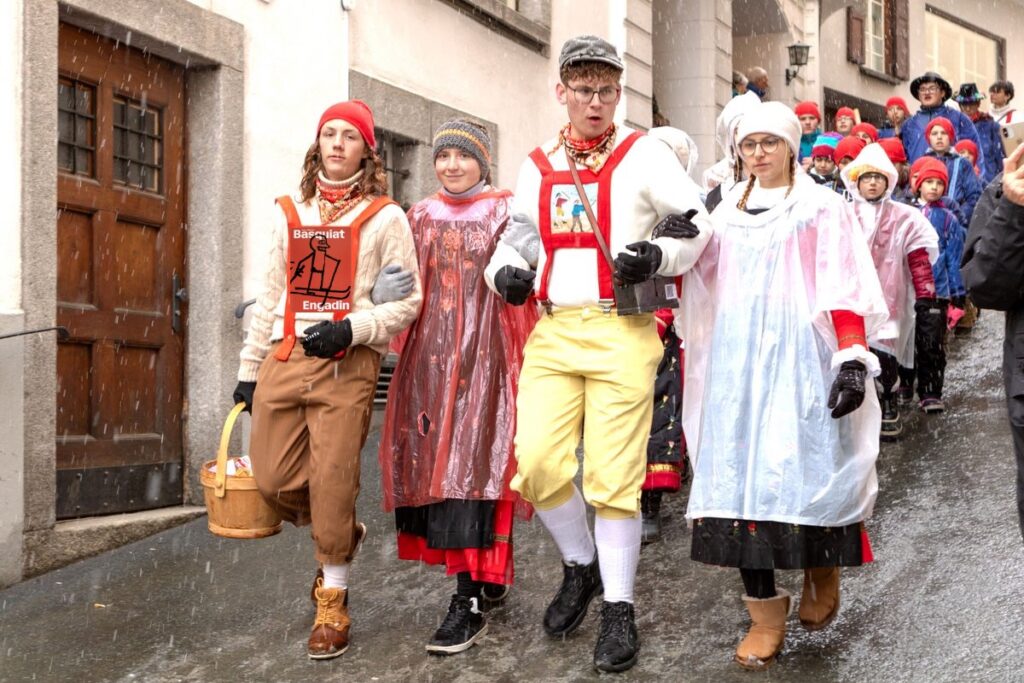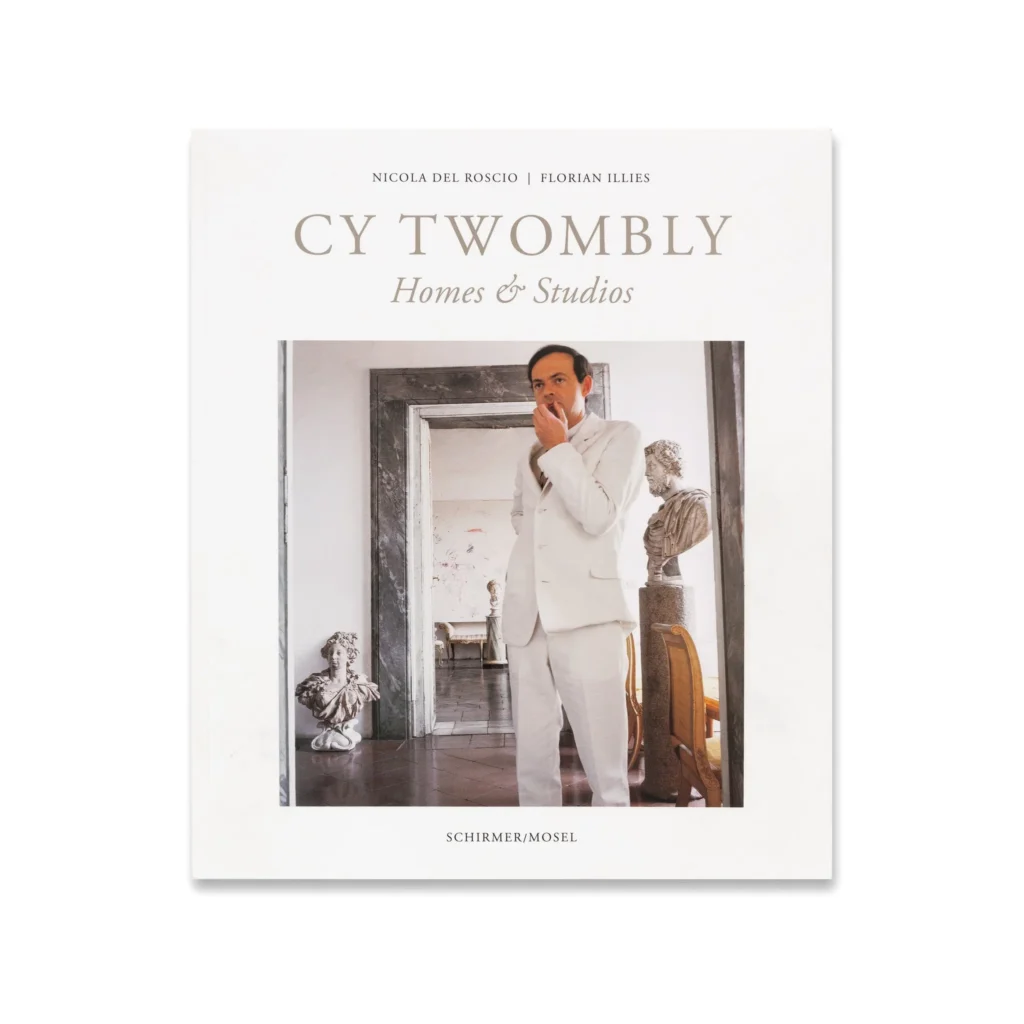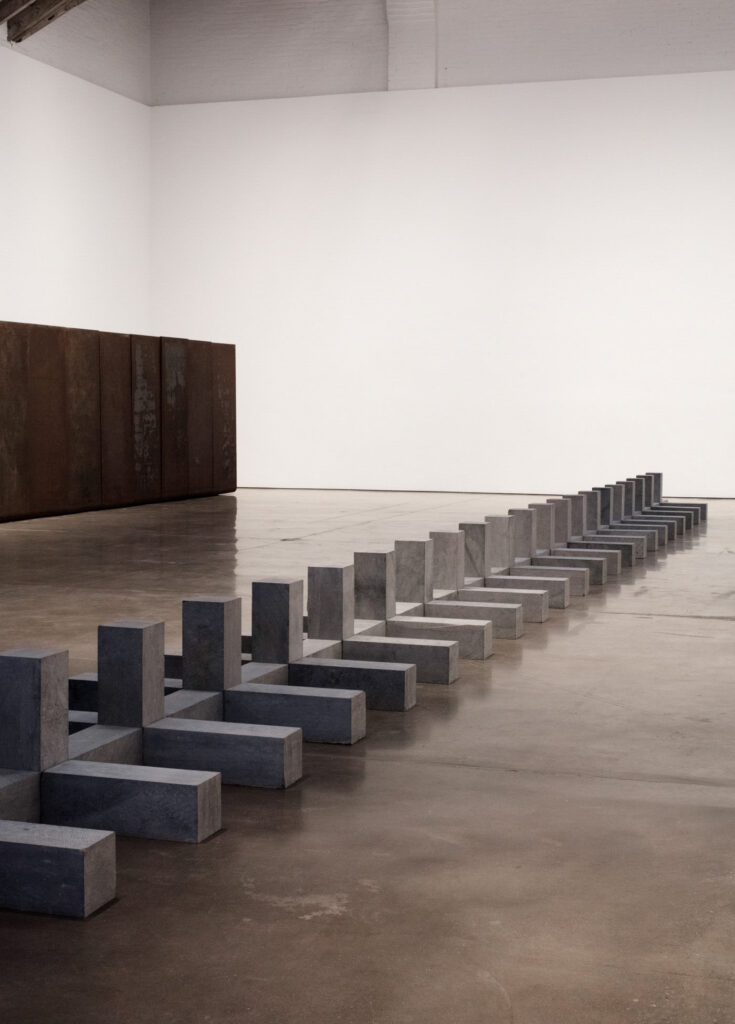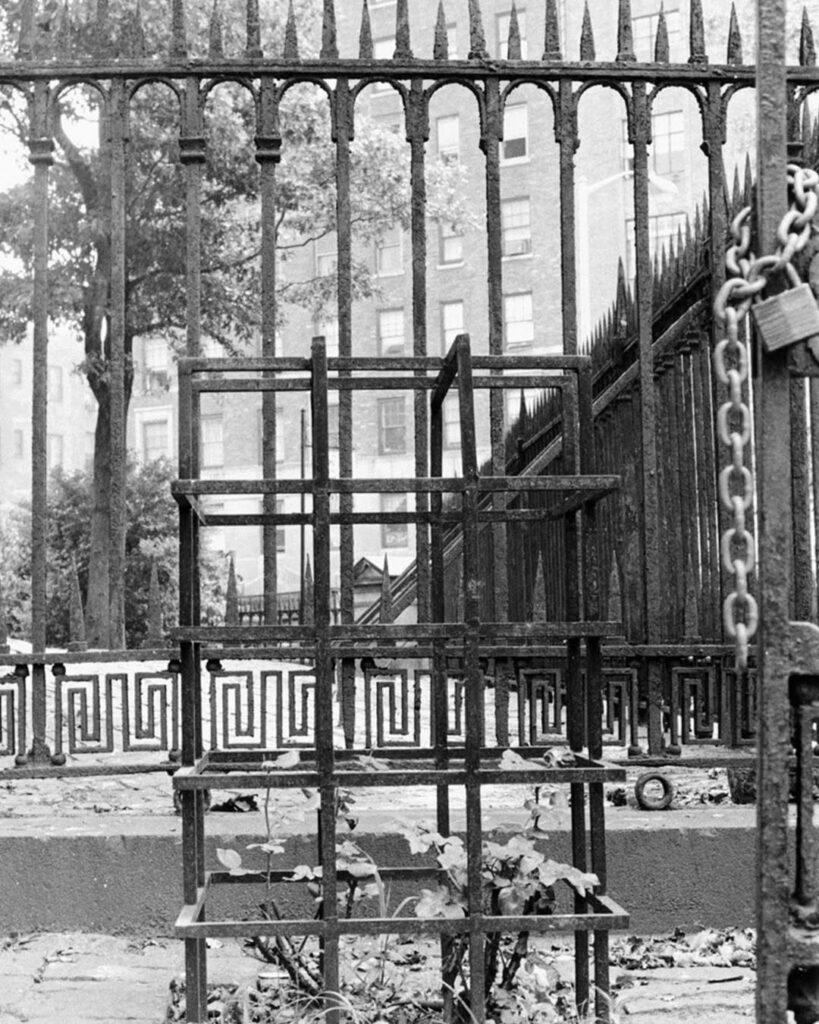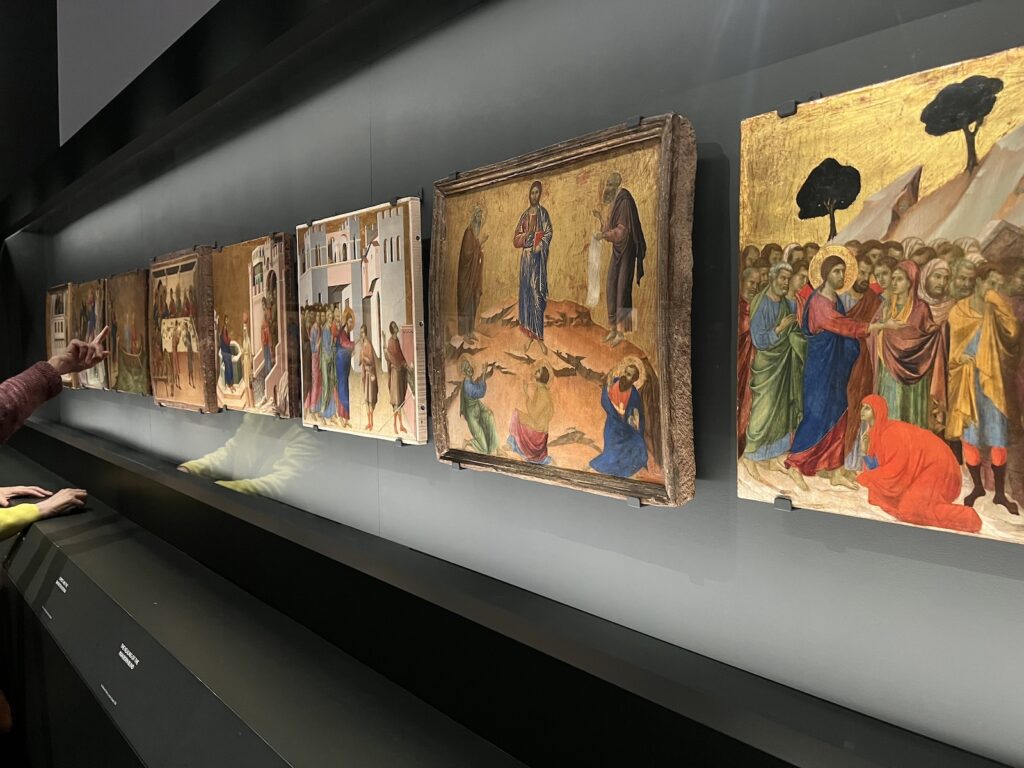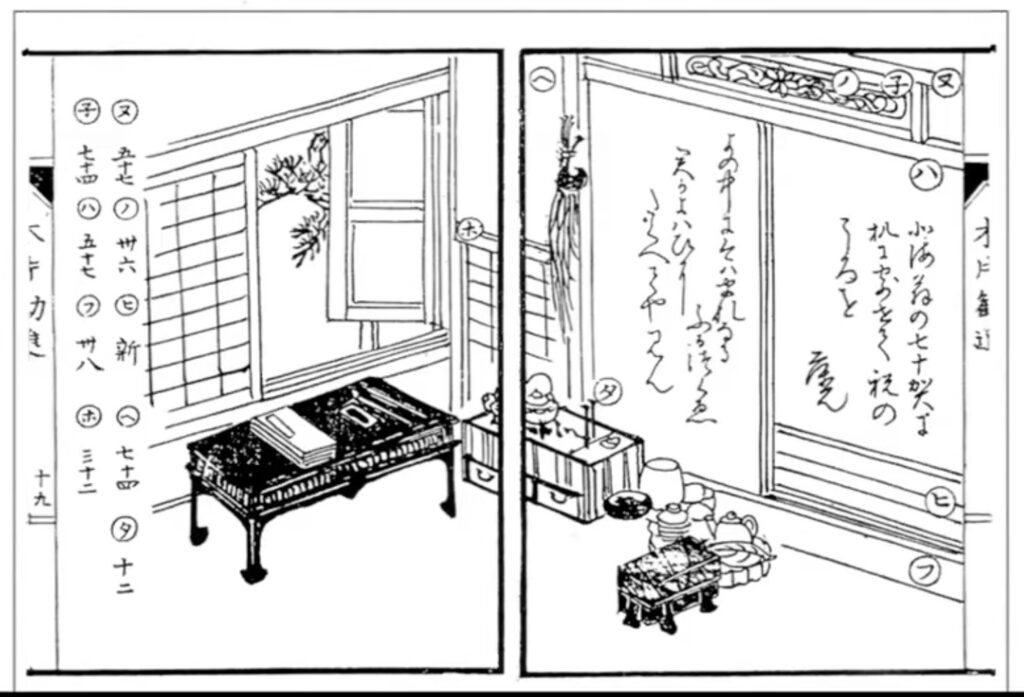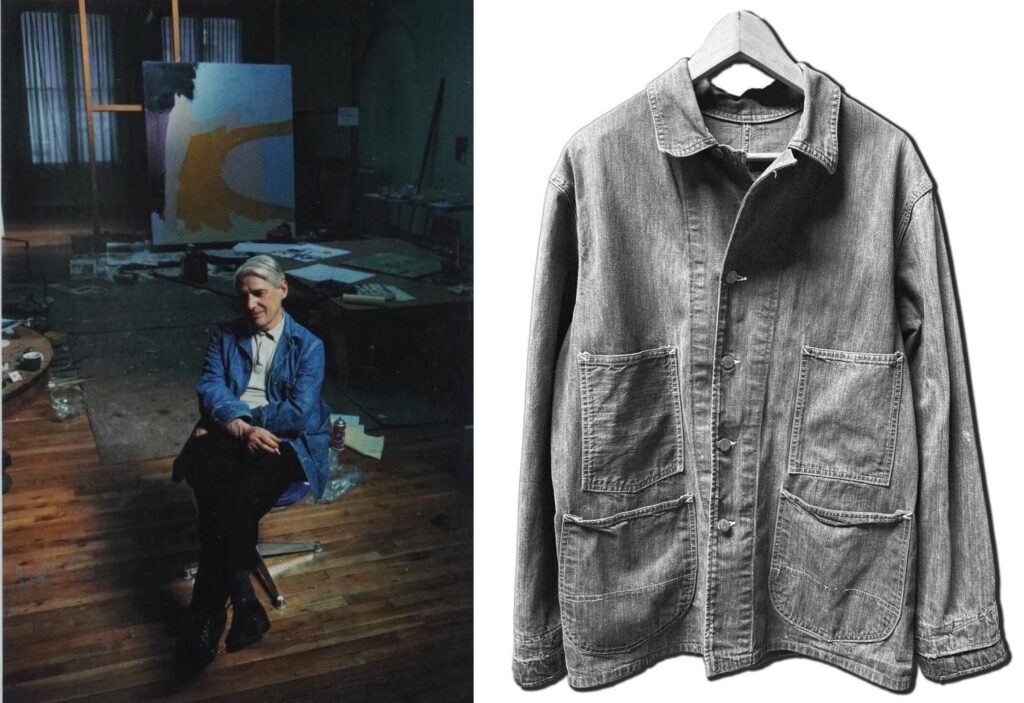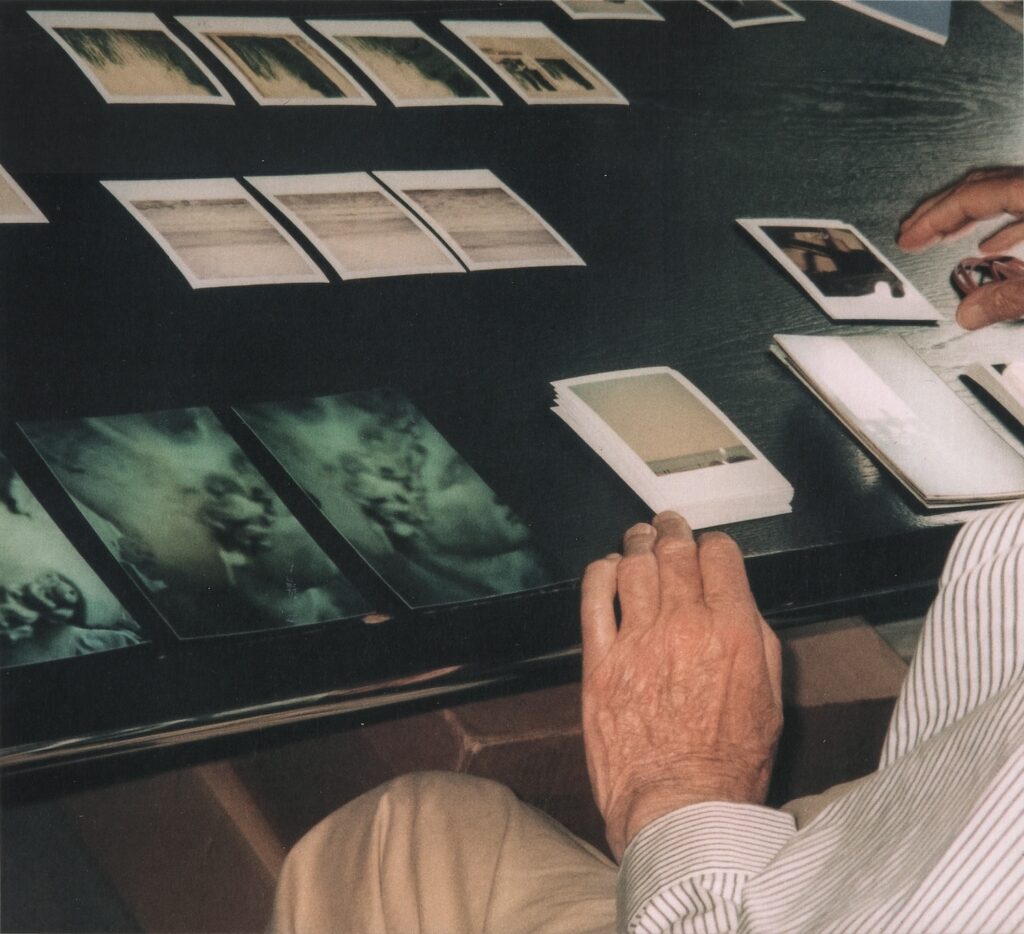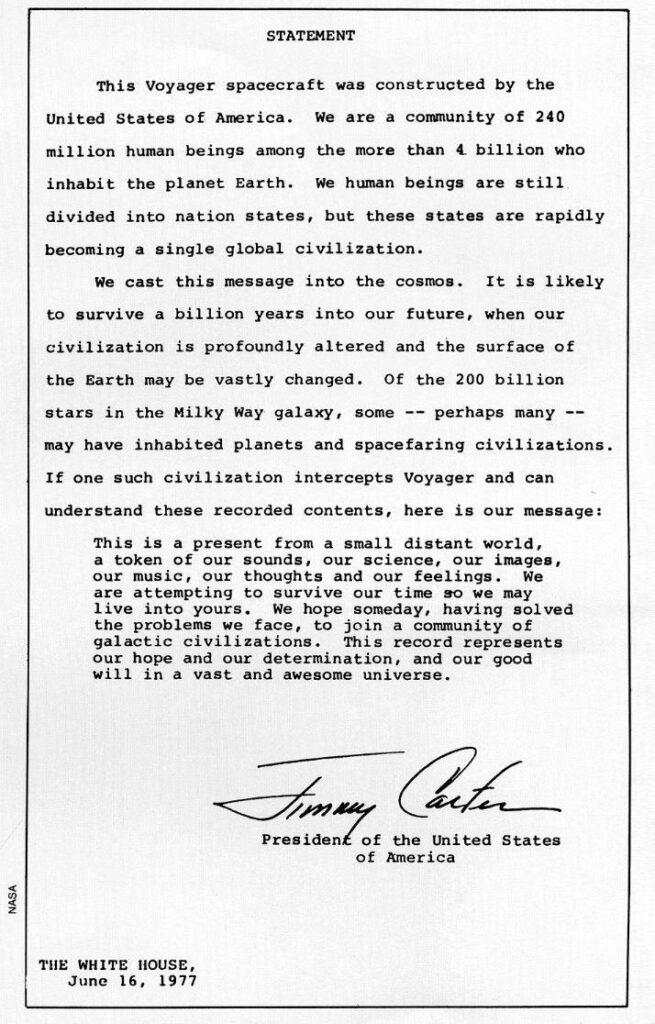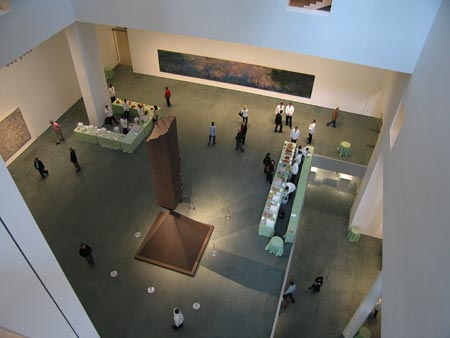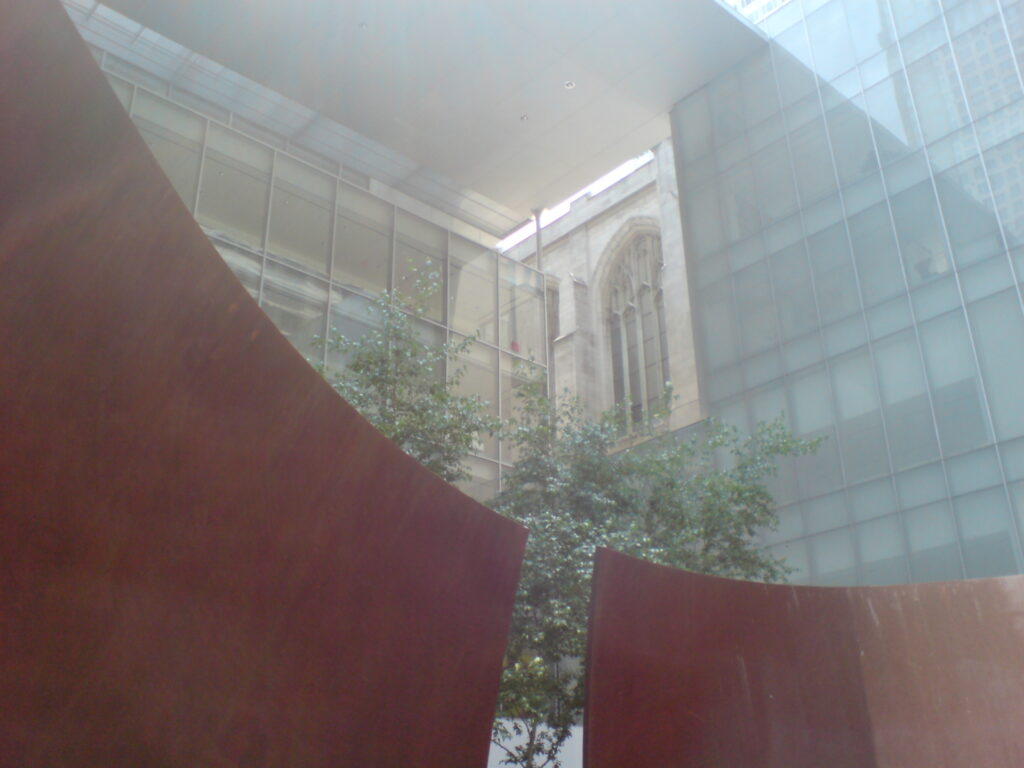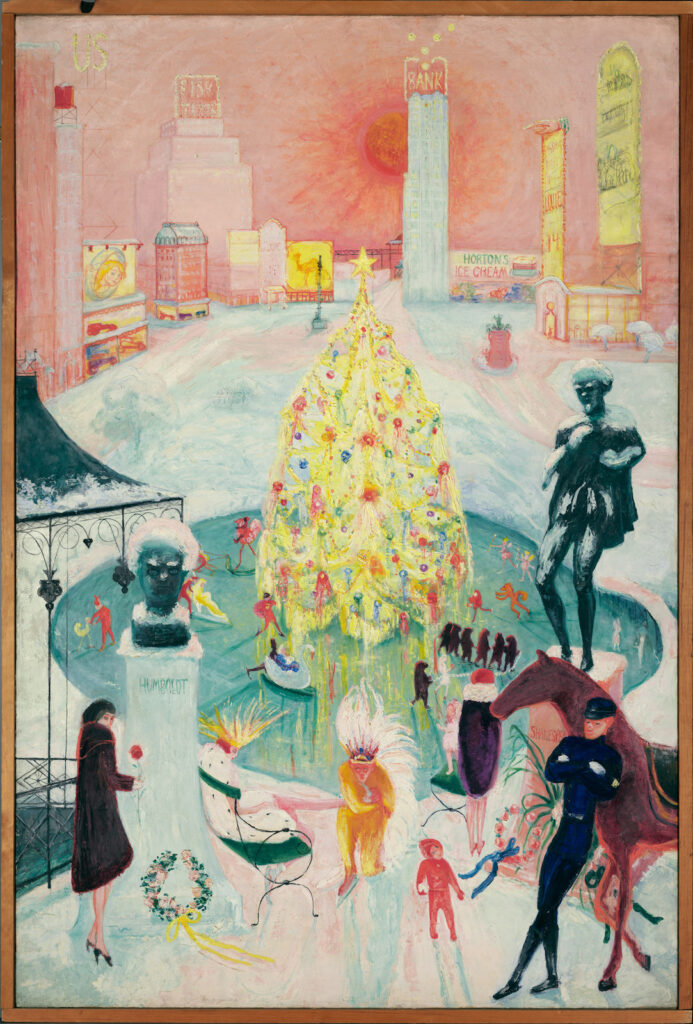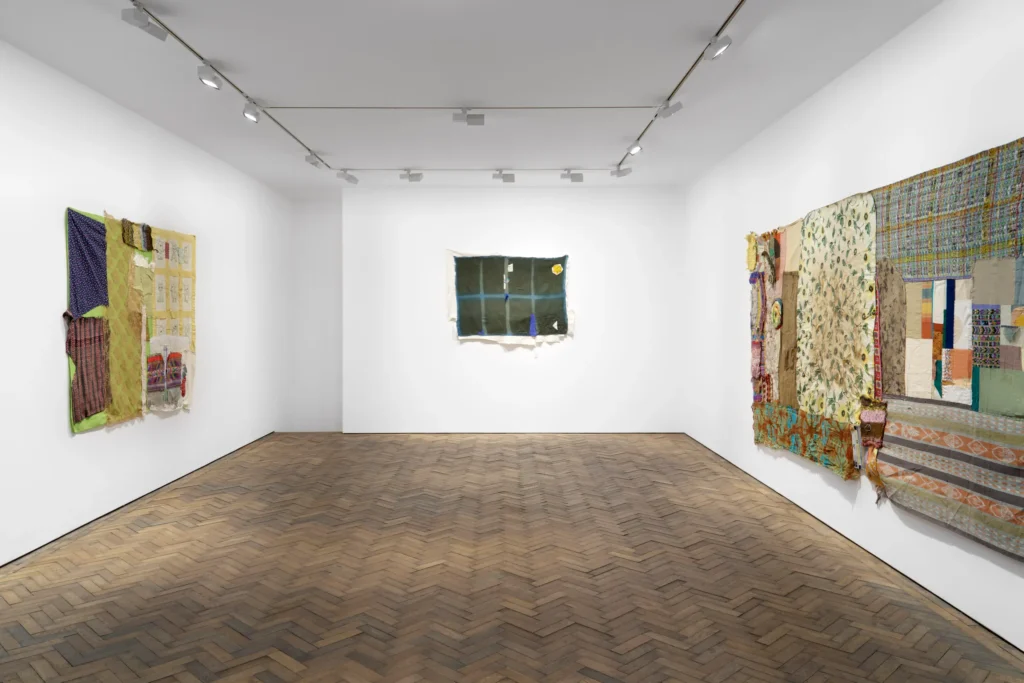
It feels like Susan Cianciolo is being constantly rediscovered, and every rediscovery is about how RUN, the garments she created in the late 1990s, are fresh and relevant for the moment. Is it all just, “well, it’s new to me,” from writers and curators, or is Cianciolo just getting hit periodically by the constantly roving trend spotlight of fashion? Because if you look at the timeline, Cianciolo has been booked and busy all along.
Her first show at Stuart Shave Modern Art in London was in 2017, when she was also in the Whitney Biennial. Her second, This is the New Earth: The Galactic Field, textile-based works made between 2019 and 2024, closes this week:
From Sicily to the Basque Country to Maine, Cianciolo has created these works using fabrics retrieved from the soil, recycled from her childhood, and gifted by friends. Cianciolo has worked with fabric for several decades, beginning with her fashion label RUN, to include embroidery and sewing as part of her extensive meditation practice.
Sewing and embroidery as an extensive meditation practice resonates with a presentation by Jeppe Ugelvig at a colloquium on memory, wear, imperfection, and the archive, held at the Museum at FIT in 2019. Ugelvig spoke of his experience curating Cianciolo’s work for a show at Bard in 2018.
Through a process of “recalibration and reordering,” Cianciolo constantly investigates her archive [sic] of materials, clothing, fragments, images, texts, and media, constantly reworking it into something new for exhibition or use. Cianciolo considers not just the aesthetic and material qualities of an element, but the associations, origin, and history.
Nothing is fixed until or unless it leaves her reach by being sold. [Right before his show opened, five scrapbooks Ugelvig had arranged to borrow were incorporated into a library and sold, so Cianciolo and her gallery provided five “just as amazing” replacements he nevertheless hadn’t seen before.]
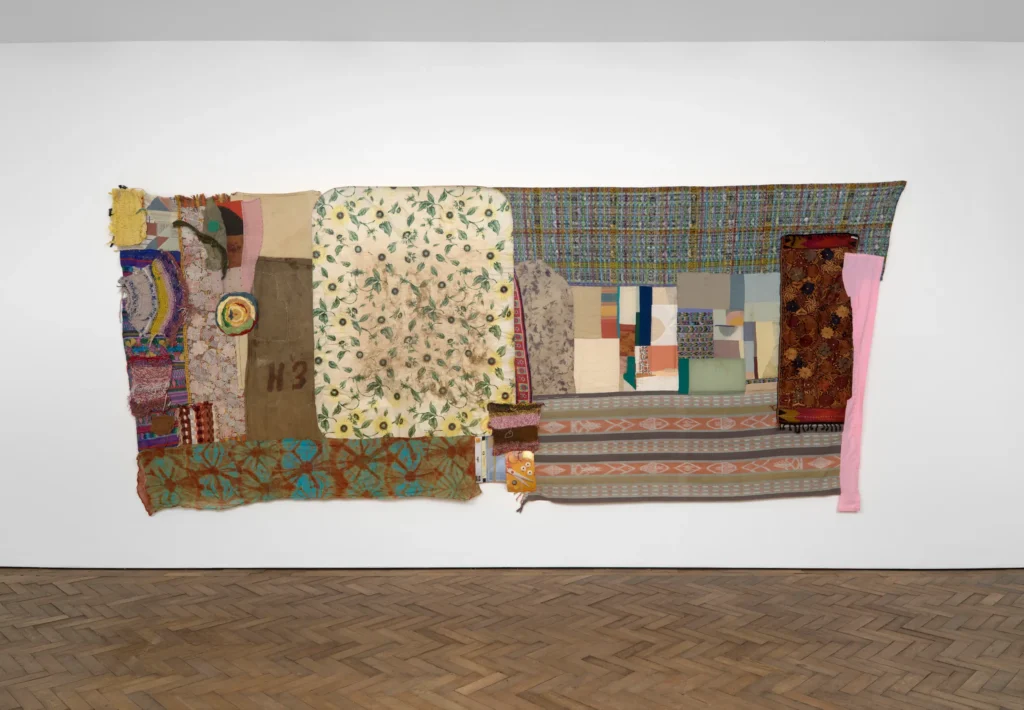
The practice of exploring and expanding a material archive is intensified, Ugelvig explains, by its necessity: an accident in the early 2000s affected Cianciolo’s typical neurological process of accessing and making new memories. The materials, designs, and other archive elements function as prompts or anchors for the artist’s understanding of herself and her world. Memory and cognition become a physical process. Her works are histories of their own making, but they are also the coalescence of all the histories of their constituent elements. Until they’re not.
This is the New Earth: The Galactic Field, Susan Cianciolo for Stuart Shave–Modern Art, Nov 2024-Jan 2025 [modernart.net]
“Memory Garments: The Non-Archive of Susan Cianciolo” [youtube]
Previous memory-related objects: A Solicitation of Wood-Scraps and The One-Mat Room; Cy Twombly Relive The Moment

